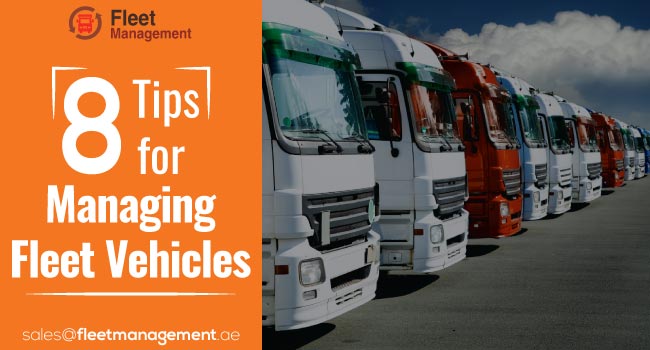Groups of vehicles owned/leased by businesses, government agencies, or other organizations are referred to as fleet vehicles. Car rental companies, public utilities, taxicab companies, police departments, and public bus companies operate fleet vehicles.
Many businesses buy/lease fleet vehicles to deliver goods to customers or cater to the travel needs of sales representatives. Fleet vehicles are managed with the help of a fleet or transport manager through fleet management software.
Read Also: 8 Tips for Managing Fleet Vehicles
A fleet management system (FMS) is employed to connect the vehicles to a telematics system for efficient management.
Buying vs Leasing
A variety of aspects should be taken into consideration to decide whether buying or leasing vehicles is more advantageous in your case.
Further, you find out whether you qualify for fleet leasing programs if you have a requirement for several cars/vans for salespeople or delivering products. It helps you to save a lot of money.
It has become easier these days to lease a small fleet of minivans, pickups, or cars. If you buy/lease more than 10 vehicles, you qualify as a commercial fleet buyer and you will be provided with a fleet registration number through the dealer.
This makes you eligible for all fleet incentive programs announced by manufacturers and dealers. Some dealers might offer programs designed by them for businesses. They may even obtain a fleet registration number for you even if you have leased less than ten cars.
In order to decide if fleet leasing is the right option for you, you must discuss with your accountant and work out the costs involved, taking into account the monthly lease payments; gas, oil, and maintenance expenses; annual insurance premium, and license fees involved.
Another aspect to be considered is whether you need to appoint a person to manage your fleet or not.
The costs and savings associated with giving an allowance to your employees and getting them to lease their vehicles should also be worked out before deciding to go ahead with fleet leasing.
One important aspect that you must clearly take note of is the penalties involved if you have to terminate a lease before the contract expiry date. This is crucial especially if you are likely to experience cash flow fluctuations every month.
Some of the possible pitfalls that you need to keep in mind prior to signing on the dotted line are as follows:
Insurance Coverage
Some dealers ask you to raise your insurance coverage. This is because they own the vehicles you leased from them. You should shop around a little bit before you decide on your fleet service provider because insurance can be quite high.
You should also find out if you can buy a blanket policy that covers both your fleet and business.
Overextending Your Hard-Earned Money
Seeing many new vehicles parked in your company’s parking area is definitely an ego booster. However, you need to decide as to how many vehicles you really need.
You must take care not to get carried away at the time of ordering a fleet. It is, therefore, highly recommended that you analyze your requirements before placing the order.
Neglecting to ascertain about mileage limits
The expenses involved vary radically and ranges anywhere from 15 cents to 20 cents per each mile driven over the prescribed limit.
So, if you cover, for instance, 50000 miles every year, buying a fleet may be a better option than leasing. Of course, you need to work out the details for your situation before going ahead with one of the options.
Failing to compare buying and leasing costs
Most dealers often have vehicles that they want to sell off as early as possible and they will offer special discounts and deals if you are ready to purchase rather than lease.
Read Also: What Are The Benefits of Fleet Management Software?
Discuss with the fleet manager in detail and work out the costs of buying and leasing in order to see as to which option makes more sense in your case. Always get the comparison in writing.
Spending too much
Never allow yourself to be talked into making a down payment that is higher than what is normal.
Typically, the down payment involves the instalment amount and license fees that are payable and a small deposit.
Forgetting state taxes
Indeed states like Nevada and Texas do not levy any taxes, but some states, for example, California, levy high taxes and registration fees. You have to pay them upfront when you lease vehicles.
Avoiding paperwork
Irrespective of the size of a fleet, you are required to keep track of the mileage and expenses for each vehicle. This is essential to budget your cash flow.
Some Helpful Tips
1. Be clear about the different types of vehicles you need – minivans, pickups, and/or passenger cars
2. Be sure as to what purpose each of the vehicles will be used for
3. Pick the right vehicles and not those that are cheap; If you do not choose the right vehicle, your job will not get done; some of the questions you must answer for selecting the right vehicle are:
- What will you haul using the vehicles?
- How much space is required?
- What should be the payload (weight capacity) of the vehicle you need?
- How would you organize the payload? Will you need special shelving, ladder racks, or toolboxes? Consider whether the pickups and vans need to be specially equipped
- How many people would be present in the vehicle at any point in time including the driver?
- If the vehicle has to pull a trailer, what should be its size and capacity?
- Whether a four-wheel drive is required for your vehicles? Will the vehicle be driven off-road to justify the additional expenditure of using four-wheel drives?
4. Know clearly the features needed on each vehicle – radios and air conditioning may be required but it is better to avoid fancy features
5. How much cargo space is required for accommodating your product?
6. How many miles do you need to cover in a year? The limit set by most leases is 12,000 to 15,000 miles in a year
7. Leasing a fleet from one dealer is more economical and efficient
8. When visiting dealerships, always discuss with their fleet manager
9. In addition to shopping for vehicles, shop for a lender as well
There are several fleet financing companies out there that are ready to discuss incentive programs, your buying needs, and payment modifications. You can find them by asking your dealer for providing a line of credit.
Read Also: 7 Essential Skills To Become A Successful Fleet Manager
Or else, you can ask the dealer to recommend a leasing company they are already doing business with. Check with other lenders as well before finalizing anything.
You can also ask your bank if they have any fleet leasing programs. Alternatively, you can make use of a buying service for negotiating a deal and setting up financing arrangements.











